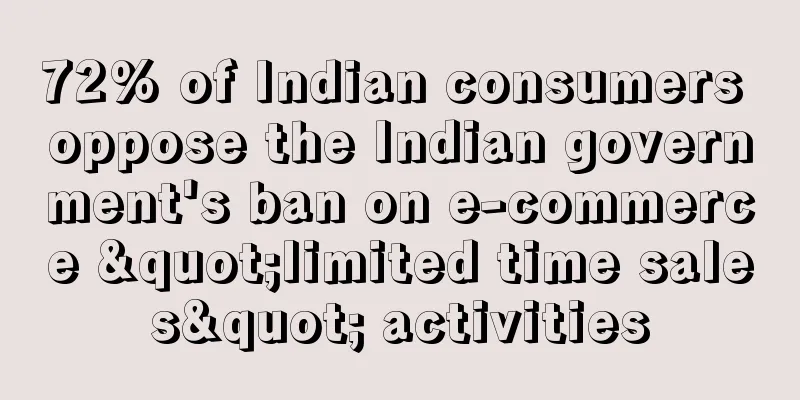Cross-border sellers flee European sites

|
Europe has always been a key market for many cross-border sellers due to its strong consumer power. However, since the Russia-Ukraine conflict, the sales environment in the European market has deteriorated: the euro and pound have continued to depreciate, inflation has intensified, and there is an energy crisis. In September, the Eurozone consumer confidence index has fallen to a record low.
As consumers tightened their belts and cut spending on non-essential items, cross-border sellers saw a sharp drop in orders. In order to win orders, many sellers continued to cut prices despite a sharp drop in the exchange rate. Although they managed to maintain some sales, their profits were greatly reduced.
It is still unknown when the overall environment will improve, so a group of sellers have begun to withdraw from European sites and rush to the US market. A survey initiated by an industry insider shows that 1/3 of sellers will focus on the US site next year and also do European sites; another nearly 1/3 of sellers said they will "only do US and give up Europe." The European market is being abandoned.
Fleeing the European market, sellers seek survival in the US
Last week, an employee of a cross-border e-commerce company heard that the company would close its European sites next year, and he would face layoffs again after just one month in the job.
Another seller is also considering whether to withdraw. Compared with other overseas markets, Europe has heavy taxes and many compliance requirements. In the past, when profits were considerable, these expenses could be tolerated, but in this year's extreme market conditions, sellers feel overwhelmed and are considering withdrawing.
How difficult is it to operate in the European market this year? Some sellers bluntly said it was "hellish difficulty". One operator was very anxious. Since September, the order volume of the account he was responsible for has dropped to 1/4, and several former colleagues who worked on the European site have gradually changed careers. Some sellers even said that they would lose money no matter what they did.
The conflict between Russia and Ukraine is the direct cause of the decline in sales in Europe. Sellers lamented that no matter how badly they did before, they still had traffic and orders, but now they only have sporadic traffic and it is common for them to not receive orders. This is especially true for the UK and Germany sites, and they are very anxious. "Europe has always been our best market, but it is completely unbearable this year, especially in September. We can't hold on any longer," said another seller.
In addition, the return rate of the same products sold on the European site is much higher than that on the US site, which also reflects the consumers' caution in shopping.
The end of September is the prelude to the peak season, but there are not many signs that the peak season will be hot in Europe. On the contrary, some sellers have reported that the number of orders has continued to decline in the second half of the year, which is even more sluggish than the first half of the year. It is hard to imagine how this year's peak season will perform.
Not only has the sales volume declined, but the profits are also much lower than before. Some sellers have temporarily stabilized their sales by reducing prices, but their profits have obviously shrunk. Sellers often complain about the serious internal competition on the US site, but in fact, the European site is not much different. "I sell something for 26.99, and the competitor sells it for 13.99." A seller is very helpless.
The exchange rate further squeezed the sellers’ profit margins. After the euro fell below parity against the U.S. dollar, the euro fell to 0.9739 U.S. dollars per euro at the Frankfurt Stock Exchange in Germany a few days ago, breaking the low in nearly 20 years.
Last Friday, the British government introduced a 45 billion pound tax cut measure. The pound fell after the announcement of this radical plan. In early Asian trading on September 26, the pound fell sharply against the US dollar to its lowest level since 1971. The pound fell 4.9% to 1 pound to 1.0327 US dollars at one point, and then stabilized at around 1 pound to 1.05 US dollars.
Yesterday, the euro fell to a low of 6.8100 against the RMB, and then stabilized around 6.90; the pound fell to a low of 7.5092 against the RMB, which shocked people in the industry.
Take the Euro as an example. The current exchange rate is 6.9 compared to about 7.6 a year ago. For every 100,000 Euros withdrawn, the seller will lose 70,000 RMB. The Euro and the British Pound continue to depreciate, while the US dollar continues to rise. In comparison, the sellers on the European site feel even more miserable.
"Those who only sell on the European and British sites said that they have cried so much this year." "With the current exchange rate of European currencies, I really don't want to sell on the European site anymore." Sellers said that the exchange rate has become a major reason for people to abandon the European market. Some sellers said that the European sites are already on the way to clearing out inventory and closing down.
In the view of sellers who have previously developed European sites, the purchasing power of users in this market is not weak, and sales thresholds such as compliance requirements can filter out some competitors. Competition is relatively small, making it a valuable area.
But now, companies that only do or focus on the European site are having a hard time. The continued sluggish sales and the subsequent marginal environment have doubled the uncertainty of operations. Some sellers pessimistically believe that, considering the market environment, orders from the European site will continue to decline. So some sellers continue to endure, while others directly change tracks and go to the US site out of risk aversion.
An Amazon seller said that the European site he expanded to was closed, but fortunately, he gradually got a few links on the US site by relying on "volumes". After tasting the sweetness, he believes that in the long run, the US market is more stable and has opportunities for gold mining.
The price involution on the US site often causes complaints from sellers, but with the entry of some sellers from European and Japanese sites, competition in the market is likely to become more intense.
Due to the accumulation of unfavorable factors, sellers are temporarily suspending their layout in Europe
Europe is one of the most valuable overseas markets. Most companies with sufficient resources will deploy some sites to seek gold, rather than leaving them blank. However, under the current situation, sellers who intend to expand into this market have also begun to wait and see.
In addition to the decline in consumer power and exchange rate, sellers in the European market are also facing higher compliance and logistics costs this year. One seller couldn't help but complain that with 20% VAT + 15% commission + FBA fees, he couldn't see where the profit of the European site was.
Cross-border sellers are increasingly disappointed with the European market. With inflation rising this year, the downgrade of European people's consumption seems to have become more serious. In addition, workers in the UK, Germany and other places have been on strike, and goods cannot be delivered normally, which makes sellers feel that it is more difficult to do business in the European market.
Inflation is rising and consumption downgrade is intensifying in Europe
European Central Bank President Christine Lagarde recently said that the COVID-19 pandemic and the Ukrainian crisis have exacerbated global supply problems, pushed up energy prices, and caused inflation in the eurozone to continue to rise, which has hit the economy. The eurozone's inflation rate has remained high for 10 consecutive months and may continue to rise in the short term.
It is understood that the CPI in the euro area was as high as 7.5% in March this year, and has been rising since then, reaching 9.1% in August, setting a historical high.
In response to continued high inflation, the European Central Bank raised key interest rates twice in July and September this year, a total of 125 basis points. However, inflation seems to be continuing, and the European Central Bank will continue to raise interest rates to prevent high inflation from affecting the economy.
Behind inflation, European families are facing rising costs of living.
The latest consumer behavior research survey in the European market released by Consumer Pulse shows that under inflation, Europeans have less money for discretionary spending and savings. Therefore, more and more consumers choose to buy less goods or postpone purchases, and many people are turning to private brands, discount stores or more affordable brands, and consumption downgrades are intensifying.
In categories such as household goods, snacks, candy and frozen foods, consumers are choosing low-cost products. Sales of some hypermarkets, grocery stores and convenience stores in Europe have also declined.
Online sales in the European market are also declining. European e-commerce data shows that global e-commerce revenue fell 3% in the first quarter of 2022 compared with the same period in 2021, and Europe fell 13%. Online sales orders fell 17%.
The decline in consumption both online and offline is a true reflection of the decline in European consumer confidence. Data released by the European Commission showed that the eurozone consumer confidence index fell to -28.8 in September, a record low.
The consumption situation in the European market remains pessimistic. As the conflict between Russia and Ukraine becomes more complicated and intense, the energy crisis in Europe may further intensify. When winter comes, energy shortages in Europe may accelerate inflation. Concerns about rising living costs and economic slowdown have severely dampened consumer purchasing sentiment.
As consumer demand decreases, ongoing strikes by workers in European countries have also had an impact on online sales.
Following strikes in June, July and August, the Rail, Maritime and Transport union (RMT) has confirmed that 40,000 workers from Network Rail and 15 train operating companies will walk off the job on October 8.
Workers in Germany are also on strike, not just in the UK. In July, German dock workers went on strike for 48 hours, with about 12,000 dock workers participating in the strike, which severely affected the daily operations of major German container ports, including Hamburg, Bremerhaven and Wilhelmshaven.
Moreover, the strike in Germany has also had a certain impact on the normal import and export of goods in some ports of its neighboring countries. Some shipping companies have announced to reduce voyages or skip ports due to congestion in European ports. Previous data showed that 150,000 containers were waiting to be loaded and unloaded at German ports. The strike has undoubtedly further aggravated the port congestion.
Workers in other European countries also took strike action. Earlier, Spanish truck drivers announced an unlimited strike in protest of rising fuel prices, which soon turned into multiple roadblocks and protests, triggering supply chain tensions in multiple industries in the country. Protests over rising fuel prices also broke out in France, and the high cost of living has deeply dissatisfied truck drivers in many European countries.
The strike actions in European countries will, to a certain extent, affect the arrival time and delivery time of goods for cross-border sellers, which in turn affects the sellers' order situation.
A European logistics company said that as congestion at European ports becomes more serious, the arrival of goods is greatly delayed, while consumption continues to be sluggish, resulting in a decrease in shipments to Europe.
Data from Container Trades shows that Europe's imports from China in the first half of the year were 3.84 million TEUs, down nearly 5% compared with the first six months of 2021. The third quarter figures are only expected to be worse.
As the shipment volume decreases, the price of European shipping is also continuing to decline. According to data from the Shanghai Shipping Exchange, on September 23, the market freight rate (sea freight and sea freight surcharge) from Shanghai Port to the European base port was US$3,163/TEU, down 10.8% from the previous period. On the Mediterranean route, the market situation is basically synchronized with the European route. The supply and demand fundamentals are not good, and the spot market booking price continues to fall.
Obviously, for cross-border sellers, the difficulty of operating in the European market is increasing this year. But in detail, under the background of global economic downturn, the overall market situation in Europe is still considerable, and not all cross-border sellers are standing still.
The overall market situation in Europe is promising, with sales growth in many categories of products
The European e-commerce report released by the European E-Commerce Association pointed out that the total amount of e-commerce in Europe will increase to 718 billion euros in 2021, with a growth rate of 13%. It is expected that the turnover will reach 797 billion euros in 2022, with a growth rate of 11%.
Eurostat predicts that the European e-commerce market will surpass that of the United States by 2024. The European Chamber of Commerce predicts that by 2030, online sales in Europe will account for an average of 30% of retail turnover.
In terms of statistics from all sides, the European market is still worthy of attention. The continuous emergence of e-commerce websites in this market is also a strong proof. It is understood that the number of e-commerce websites in Europe is increasing rapidly, reaching 126% in 2022, an increase of 221% compared with 2019 before the epidemic.
It can be seen that some companies are still optimistic about the European market, and some cross-border sellers are still working hard on the European online market. In fact, under the influence of factors such as the falling exchange rate and constant strikes, some cross-border sellers still have a lot of gains in the European site.
CIARRA is the leading kitchen appliance brand on Amazon Europe. It was founded in Germany in 2016 and its Chinese headquarters is located in Guangdong. This month, this cross-border kitchen appliance brand completed a round A financing of tens of millions of RMB. CIARRA will mainly use the funds from this round of financing to expand product categories, upgrade the digital supply chain and operate the brand.
On Amazon France, a popular CIARRA range hood has more than 1,000 reviews, and many buyers are satisfied with the product, believing that the price and effect are good. CIARRA's 10 million yuan financing also shows that capital is full of confidence in the online kitchen appliance industry in the European market.
Hangzhou Chongheng is also doing well in Europe. After paying close attention to European climate and carbon neutrality policies, Chongheng believed that Europe would experience hot weather this year, so it increased its stock of pet swimming pools. As a result, the scorching heat swept across Europe this summer, and all of the more than 5,000 pieces of goods that Chongheng had prepared were sold out.
Not only have some sellers achieved good results in Europe, but some specific categories have also achieved good sales in Europe.
According to the latest "Amazon Benchmark Report 2022" released by market research firm Perpetua, purchases of auto parts in the European market increased by 89% in the second quarter of this year.
In early August , the search volume for the term "artificial Christmas tree" in the UK increased by 122% . The sales of artificial Christmas trees in many local stores increased significantly compared with the same period last year, and the sales growth of some stores even reached 4 times. Not only Christmas trees, but also clothing, accessories, candy gift baskets, toys, and electronic products during Christmas.
In addition, many other categories also have good sales in the European market.
According to the results of the online shopping consumer survey conducted by Eurostat, the frequency of local online consumption is as follows from high to low: clothes (including sportswear), shoes or accessories (68%), furniture, home decorations or gardening products (29%), cosmetics, beauty or health products (27%), printed books, magazines or newspapers (25%), sporting goods (excluding sportswear) (24%), and children's toys or childcare products (20%).
In Europe, the main reasons that drive consumers to shop online include convenience, low prices, and a wide range of product categories. Cross-border sellers also need to pay attention to new consumer trends and make reasonable plans.
Due to the combined impact of the Russian-Ukrainian conflict, inflation, and falling exchange rates, the difficulty of operating in the European market has increased dramatically this year. Although some sellers have chosen to withdraw, some sellers have seen growth, with considerable sales of multiple categories of products. Compared with other markets, the purchasing power of the European market is still strong, and many categories of products have also performed well, and it is still the main market for cross-border sellers. European Market Layoffs Sluggish sales |
>>: The blocking incident in the delivery room
Recommend
What is BuyWithMe? BuyWithMe Review, Features
<span data-docs-delta="[[20,{"gallery"...
What is Robotic Tech Vest? Robotic Tech Vest Review, Features
Robotic Tech Vest, or RTV for short, was launched...
India's FMCG industry grew 9.4% in Q4 FY2021
India's fast-moving consumer goods industry g...
Shopify and JD.com reach strategic partnership to accelerate its expansion in China
According to foreign media reports, Canadian e-co...
Cainiao launches China-Europe heating logistics line, "China Winter Eight-piece Set" can be delivered to Europe in as fast as 7 days
"Recently, we have received a lot of request...
Guangxi Department of Commerce and Alibaba International Strategic Cooperation: Help Guangxi merchants go global and achieve new speed in digital foreign trade
On September 16 , the 2023 China - ASEAN Silk Roa...
What is 80's Purple? 80's Purple Review, Features
80's Purple is a clothing brand. About 80'...
A wave of account registrations has broken out, and middle school students and village uncles are also joining Amazon...
Outsider: So excited! Amazon, I’m here to make mo...
GMV soared 47 times! Bday's performance in Vietnam has improved, and four major categories have become popular
Lazada's Bday promotion brought new business ...
Follow-up to Amazon’s account suspension! Platform traffic plummets, Chinese sellers suffer internal damage
Amazon’s account ban wave continues. Under the he...
What is Audtools? Audtools Review, Features
Audtools is a Facebook audience targeting tool tha...
Another infringing product was seized at the customs! Sellers should avoid stepping on mines
Product infringement is a stepping stone for many...
Alibaba International Station's overseas traffic is increasing rapidly, and a semi-hosted special session will be opened in March, the peak season for foreign trade
Starting from March 1, the biggest foreign trade ...
What is Zhengpai Cross-border Business School? Zhengpai Cross-border Business School Review, Features
Zhengpai Cross-border Business School is a trainin...
What is Vera Wang? Vera Wang Review, Features
<span data-docs-delta="[[20,{"gallery"...









